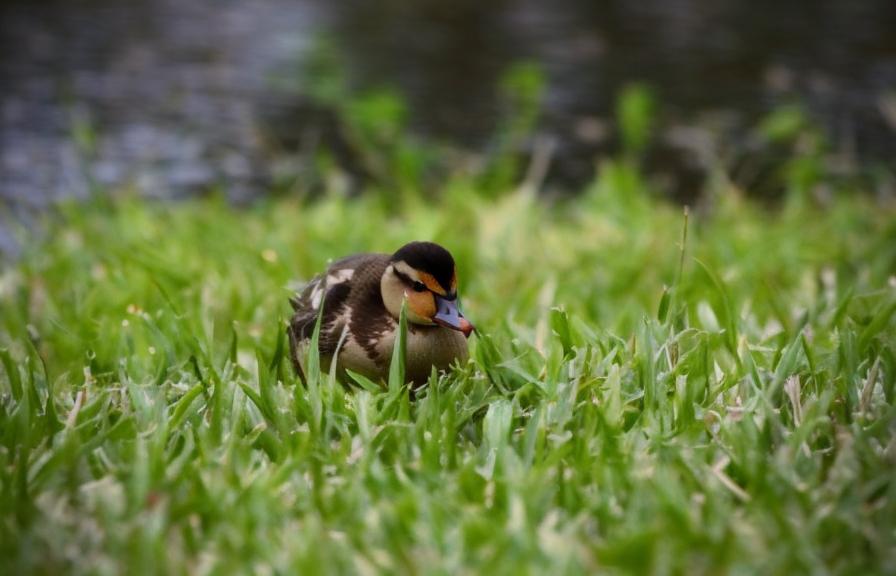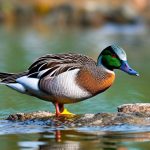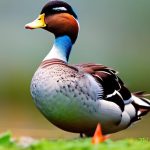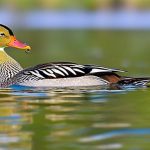The breeding season for ducks mallards typically occurs in the spring and summer months, with the exact timing varying depending on geographical location. In general, mallards begin their courtship and mating behaviors in late winter or early spring, with nesting and egg-laying taking place shortly thereafter. The breeding season is a critical time for mallards, as it is when they establish and maintain their population for the following year. Understanding the breeding season for ducks mallards is essential for conservation efforts and wildlife management, as it allows researchers and conservationists to monitor population trends and implement strategies to protect and support these important waterfowl.
During the breeding season, male mallards will engage in elaborate courtship displays to attract females. These displays often involve vocalizations, head bobbing, and tail wagging, as well as chasing and fighting with other males to establish dominance. Once a female has been courted successfully, she will select a nesting site and lay a clutch of eggs. The female will then incubate the eggs for approximately 28 days, during which time the male will provide protection and support. After hatching, the ducklings will remain with their mother for several weeks as they grow and develop before eventually becoming independent. Understanding the breeding season for ducks mallards provides valuable insight into their behavior and life cycle, allowing researchers to better understand and protect these iconic waterfowl.
Key Takeaways
- Breeding season for ducks mallards typically occurs in the spring and early summer, with peak activity in April and May.
- Factors such as temperature, food availability, and daylight length influence the breeding season for ducks mallards.
- Courtship and mating behaviors of ducks mallards include head bobbing, tail wagging, and vocalizations to attract mates.
- Ducks mallards prefer to nest in grassy areas near water, such as marshes, ponds, and wetlands, for protection and easy access to food.
- Incubation of duck mallard eggs takes about 26-28 days, with the female responsible for most of the incubation while the male guards the nest.
Factors that influence the breeding season for ducks mallards
Several factors influence the breeding season for ducks mallards, including environmental conditions, food availability, and predator pressure. One of the most significant factors is photoperiod, or the length of daylight, which triggers hormonal changes in ducks that signal the start of the breeding season. As the days lengthen in the spring, ducks experience an increase in reproductive hormones, prompting them to engage in courtship and mating behaviors. Additionally, temperature and weather patterns can impact the timing of the breeding season, as ducks require suitable conditions for nesting and raising their young.
Food availability also plays a crucial role in influencing the breeding season for ducks mallards. As omnivores, mallards rely on a diverse diet of aquatic plants, insects, and small invertebrates to support their reproductive efforts. A lack of food resources can delay or inhibit the breeding season, as ducks may not have sufficient energy reserves to invest in courtship, nesting, and egg-laying. Similarly, predator pressure can influence the timing of the breeding season, as ducks may delay reproduction if they perceive a high risk of predation on their offspring.
Human activities and disturbances can also impact the breeding season for ducks mallards. Habitat destruction, pollution, and disturbance from recreational activities can disrupt nesting sites and cause stress to breeding pairs, potentially leading to reduced reproductive success. Understanding the various factors that influence the breeding season for ducks mallards is essential for conservation efforts, as it allows researchers and wildlife managers to identify and address potential threats to these important waterfowl.
Courtship and mating behaviors of ducks mallards during breeding season
During the breeding season, ducks mallards engage in elaborate courtship and mating behaviors to attract a mate and establish pair bonds. Male mallards will often perform courtship displays to impress females, which can include vocalizations, head bobbing, tail wagging, and preening. These displays are designed to showcase the male’s fitness and genetic quality to potential mates, as well as to establish dominance over rival males. Female mallards will assess these displays and choose a mate based on his vigor and attractiveness.
Once a pair bond has been established, male and female mallards will engage in mating behaviors, which typically occur in or near water. Mating can be a vigorous and sometimes aggressive process, with males pursuing females and engaging in physical displays of dominance. Once copulation has occurred, females will begin to search for suitable nesting sites to lay their eggs. Courtship and mating behaviors are essential components of the breeding season for ducks mallards, as they allow individuals to find mates and reproduce successfully.
Nesting habits and habitat selection of ducks mallards during breeding season
Nesting habits and habitat selection are critical aspects of the breeding season for ducks mallards. Female mallards will typically seek out nesting sites that provide adequate cover and protection for their eggs and ducklings. Common nesting habitats include grassy areas near water bodies, marshes, wetlands, and even urban environments such as parks and gardens. The female will construct a nest from grasses, reeds, and other vegetation, lining it with down feathers for insulation.
Once the nest is complete, the female will lay a clutch of eggs over a period of several days, typically laying one egg per day until she has a full clutch. Mallard clutches can range in size from 8-13 eggs on average, although larger clutches have been recorded. The female will then begin incubating the eggs, a process that takes approximately 28 days. During this time, she will only leave the nest briefly to feed before returning to keep her eggs warm and protected.
Habitat selection is crucial for the nesting success of ducks mallards during the breeding season. Suitable nesting sites provide cover from predators such as raccoons, foxes, and birds of prey, as well as protection from flooding or disturbance. Understanding nesting habits and habitat selection is essential for conservation efforts, as it allows researchers and wildlife managers to identify and protect critical nesting areas for these important waterfowl.
Incubation and hatching of duck mallard eggs during breeding season
After laying a clutch of eggs, female mallards will begin the incubation process to hatch their offspring during the breeding season. Incubation typically lasts around 28 days, during which time the female will diligently keep her eggs warm and protected from predators. She will rotate the eggs regularly to ensure even heat distribution and may pluck down feathers from her breast to line the nest and provide additional insulation.
As the incubation period nears its end, the eggs will begin to hatch, with ducklings emerging over a period of several hours or days. Newly hatched ducklings are precocial, meaning they are relatively mature and mobile from birth. They are covered in down feathers and have open eyes, allowing them to follow their mother shortly after hatching. The hatching process is a critical stage of the breeding season for ducks mallards, as it marks the beginning of parental care and rearing for the female.
Parental care and rearing of duck mallard ducklings during breeding season

After hatching, female mallards will lead their ducklings to water within 24-48 hours to begin feeding and learning essential survival skills during the breeding season. The mother will provide guidance and protection for her offspring as they explore their environment and search for food. Ducklings will feed on aquatic plants, insects, small invertebrates, and other food sources found in their wetland habitat.
Female mallards are highly attentive mothers during the breeding season, keeping a close watch over their ducklings to ensure their safety from predators such as raccoons, foxes, birds of prey, and even other ducks. Ducklings will remain with their mother for several weeks as they grow and develop before eventually becoming independent. Parental care and rearing are crucial components of the breeding season for ducks mallards, as they contribute to the survival and success of future generations.
Conservation efforts and challenges during the breeding season for ducks mallards
Conservation efforts during the breeding season for ducks mallards are essential for protecting these iconic waterfowl and ensuring their long-term survival. Habitat loss and degradation pose significant challenges to mallard populations during the breeding season, as wetlands are drained or developed for agriculture, urbanization, or other purposes. Conservation organizations work to protect critical wetland habitats through land acquisition, restoration projects, and habitat management initiatives.
Human disturbances also present challenges during the breeding season for ducks mallards. Recreational activities such as boating, fishing, hunting, and birdwatching can disrupt nesting sites and cause stress to breeding pairs. Conservationists advocate for responsible wildlife viewing practices and habitat protection measures to minimize human impacts on duck populations.
Invasive species such as feral cats, rats, and non-native plants can also pose threats to ducks mallards during the breeding season by preying on eggs or competing with native vegetation for resources. Conservation efforts focus on controlling invasive species through trapping programs, habitat restoration projects, and public education campaigns.
Climate change presents additional challenges during the breeding season for ducks mallards by altering weather patterns, water availability, and food resources. Conservation organizations monitor climate trends and advocate for policies that mitigate greenhouse gas emissions while promoting sustainable land management practices.
Overall, conservation efforts during the breeding season for ducks mallards are essential for protecting these iconic waterfowl and ensuring their long-term survival. By understanding the various factors that influence their breeding season and implementing targeted conservation strategies, researchers and wildlife managers can work to safeguard these important species for future generations.
If you’re interested in learning more about the breeding season for ducks, especially mallards, you might also want to check out this informative article on creating the perfect A-frame chicken coop for your backyard flock. The article provides valuable insights into designing a comfortable and secure living space for your chickens, which can be equally important when considering the well-being of your ducks during their breeding season. You can read the full article here.
FAQs
What is the breeding season for ducks, specifically mallards?
The breeding season for mallard ducks typically occurs in the spring, from March to May.
Where do mallard ducks build their nests?
Mallard ducks build their nests on the ground, often in grassy areas near water such as ponds, lakes, or marshes.
How many eggs do mallard ducks typically lay?
Mallard ducks typically lay around 8-13 eggs in a single clutch, although the number can vary.
How long does it take for mallard duck eggs to hatch?
Mallard duck eggs take about 23-30 days to hatch, with the female mallard incubating the eggs during this time.
What do mallard ducks feed their young?
Mallard ducklings are fed a diet of insects, small fish, and aquatic plants by their mother.
Do mallard ducks mate for life?
Mallard ducks do not mate for life and will often find new mates each breeding season.
Are mallard ducks protected during their breeding season?
Mallard ducks, like all migratory birds, are protected under the Migratory Bird Treaty Act, which prohibits the disturbance or destruction of their nests and eggs during the breeding season.
Meet Walter, the feathered-friend fanatic of Florida! Nestled in the sunshine state, Walter struts through life with his feathered companions, clucking his way to happiness. With a coop that’s fancier than a five-star hotel, he’s the Don Juan of the chicken world. When he’s not teaching his hens to do the cha-cha, you’ll find him in a heated debate with his prized rooster, Sir Clucks-a-Lot. Walter’s poultry passion is no yolk; he’s the sunny-side-up guy you never knew you needed in your flock of friends!







